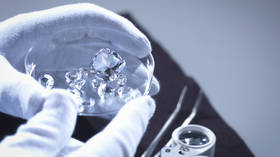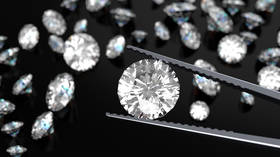Western ban on Russian diamonds comes into force

Western restrictions on direct imports of Russian diamonds have come into effect. As of January 1, deliveries of non-industrial diamonds mined, processed, or produced in Russia to the markets of G7 and EU countries are forbidden.
These restrictions are only the first part of the ban. On March 1, the second phase is set to kick in, which applies to natural Russian diamonds from 1 carat that were processed in third countries. From September 1, 2024, imports of Russian synthetic diamonds processed in third countries, jewelry, and wrist or pocket watches made in third countries using Russian diamonds weighing 0.5 carats or more will also be banned.
In September, Western countries also plan to introduce a tracking mechanism for inspecting unprocessed stones in order to establish their origin more effectively and avoid sanctions violations.
Some industry experts have expressed doubts regarding the tracking mechanism. While the details of the proposed system have not yet been made public, it will reportedly be based on the Kimberley Process Certification Scheme, which is currently the only way to trace a diamond’s origin at the start of the supply chain, as the certificate is issued to rough gems. Cut and polished stones which later flow through the markets and trading houses are nearly impossible to track.
“With the best will in the world, the average customs agent will not be able to look at one diamond and another diamond and go, ‘That’s the Russian one,’” Al Cook, the CEO of De Beers, the world’s biggest diamond miner by value, said last month.
Meanwhile, Moscow has already pivoted its diamond trade to the markets of China, India, the UAE, Armenia, and Belarus. These countries have all seen a sharp increase in rough and cut stone imports from Russia over the past several months. Kremlin spokesman Dmitry Peskov warned last month that the ban will have a boomerang effect on Western countries, hitting their own economies by depriving them of Russian diamonds. He also noted that Russia is prepared for the ban, and has tools to circumvent it.
The diamond ban was first announced by the G7 countries (Canada, France, Germany, Italy, Japan, the US, and UK) in early December. Several days later, the ban was included in the EU’s 12th package of sanctions on Russia.
For more stories on economy & finance visit RT's business section













